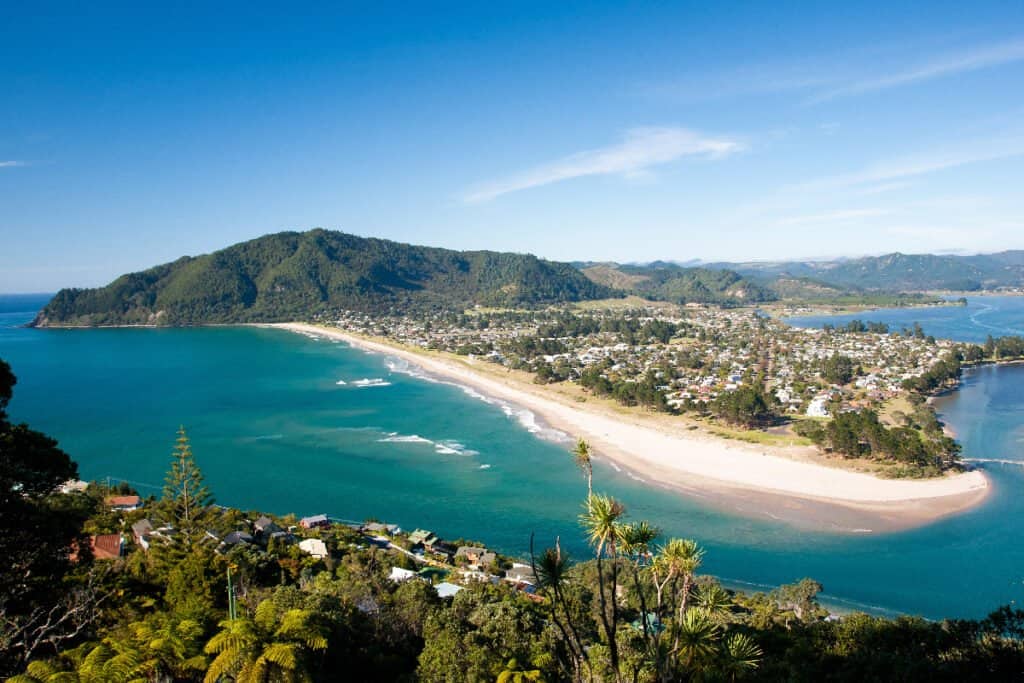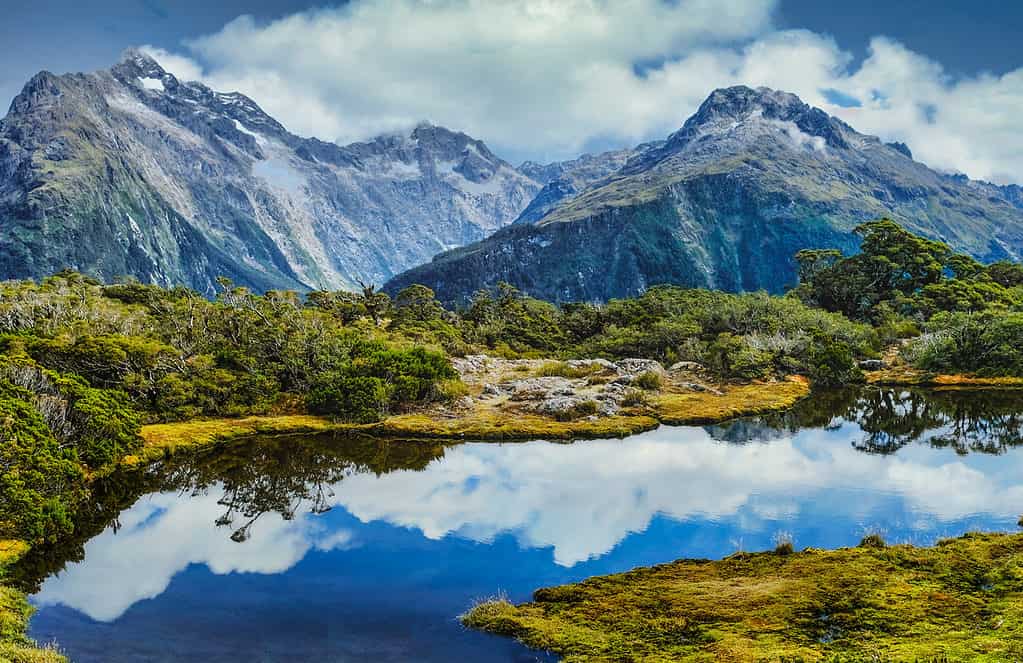While it may be known for its lush green landscape, adventure tourism, and excellent wine, New Zealand is a fascinating country with a rich history and an absolutely breathtaking landscape. The winter months bring snow and excellent skiing to the country’s towering peaks. You can enjoy seasonal changes throughout the year at the island nation in the Pacific Ocean. Yes, it snows in New Zealand. But the amount of snowfall varies based on location and some areas don’t see any at all. Overall, New Zealand is not particularly snowy.
New Zealand includes two islands: North Island and South Island. The Cook Strait runs in between the two islands. North Island has more residents than South Island. They have similar climates overall, although the areas higher in elevation tend to get colder and snowier.
What Is Winter Like in New Zealand?

North Island is the northern half of New Zealand and the location of the country’s capital, Wellington.
©ian woolcock/Shutterstock.com
Generally, New Zealand is not snowy or cold most of the time. It has a temperate climate, in large part due to its location in the South Pacific. The average temperatures are between 40 to 60 degrees Fahrenheit in the winter. The South Island tends to have colder temperatures than the North Island. Winter is June through August in this country. Summer temperatures are generally between 65 and 80 degrees Fahrenheit. North Island is typically warmer than South Island in the summer months as well, although this can vary depending on your proximity to the coast and elevation.
Because it has a strong reputation as an outdoor adventure destination, many of the activities in New Zealand take advantage of the mild temperatures. Summer is a busy season for tourists but the colder months are also a lot of fun, particularly for winter sports. There are many stunning national parks to visit as well as other hot spots that let you book guided tours through the wilderness.
Does New Zealand Get a Lot of Snow?

Mount Taranaki in New Zealand is one of the country’s volcanos, although most experts agree that it is now dormant.
©Dave Young, CC BY 2.0, via Wikimedia Commons – Original / License
June through August is winter in New Zealand. This is the time of year most likely to see snow. The snowiest place in New Zealand is Wanaka and its neighboring city Queenstown. These towns are on South Island and are known as skiing and snowboarding destinations for those living in the area as well as tourists. Treble Cone is famous for its high peaks. It also has soft, powdery snow perfect for skiing.
On North Island, the Central Plateau is the snowiest spot. Tongariro National Park is a great place to visit on North Island if you want to experience some winter weather and learn about the Maori culture. Mount Ruapehu is over 9,000 feet high and is the tallest peak on North Island. The nearby Whakapapa Ski Resort is the largest in New Zealand. Mount Taranaki is a fascinating place on the Taranaki Peninsula of North Island. A once-active volcano, the last eruption occurred in 1775. Experts believe that it is now dormant and snow covers the peak during winter. If you want to see an active volcano, there are plenty of options in New Zealand.
Winter Snow in Wanaka and Queenstown, New Zealand
| Month | Typical Snowfall |
|---|---|
| June | 1.5 inches |
| July | 1.3 inches |
| August | 0.8 inches |
June, July, and August are peak times for snowfall. However, early-season snow in May does occur in some years. By September, the temperatures are starting to warm up as spring arrives. Snow in the late spring, summer, or early fall is almost unheard of in New Zealand. Keep in mind that the entire country has a temperate coastal climate. Snow tends to occur in the mountains and at higher elevations, mostly in the central part of the islands.
How Cold Is Fall in New Zealand?

Visiting popular places like Milford Sound, South Island, New Zealand during the fall means fewer crowds.
©iStock.com/stockphoto52
April through May is fall in New Zealand. Temperatures range from 55 to 65 degrees Fahrenheit. Fall is a great time to visit New Zealand because you can still enjoy warm days but don’t have to deal with the heavier crowds that typically accompany the summer months. March and April are usually warm enough to still go to the beach and enjoy plenty of sun. As the temperatures cool a bit going into May, hiking and walking through the bush is very popular. The evenings can cool off, typically getting to the mid-50s.
The photo featured at the top of this post is © iStock.com/Gary Webber
Thank you for reading! Have some feedback for us? Contact the AZ Animals editorial team.







